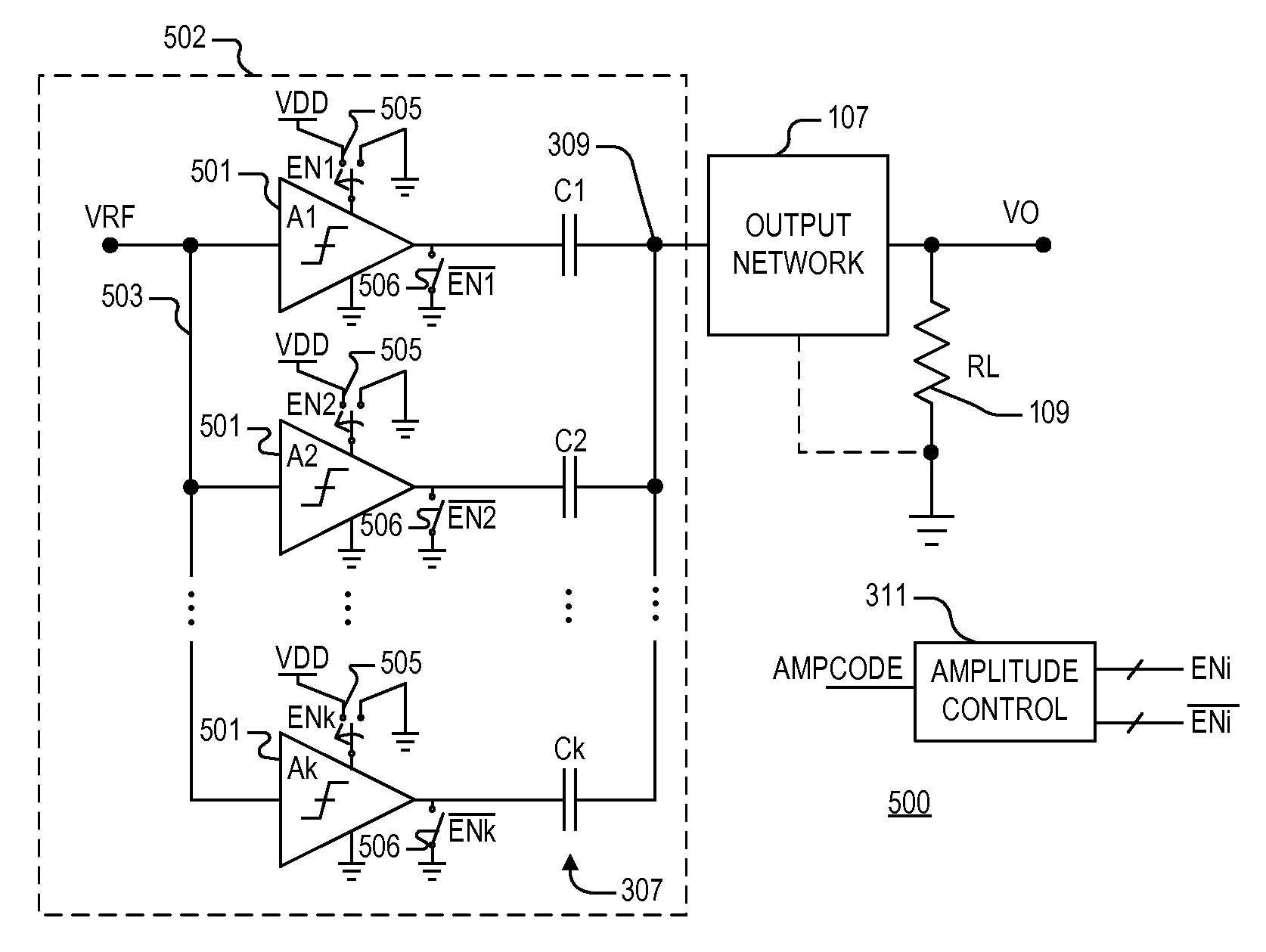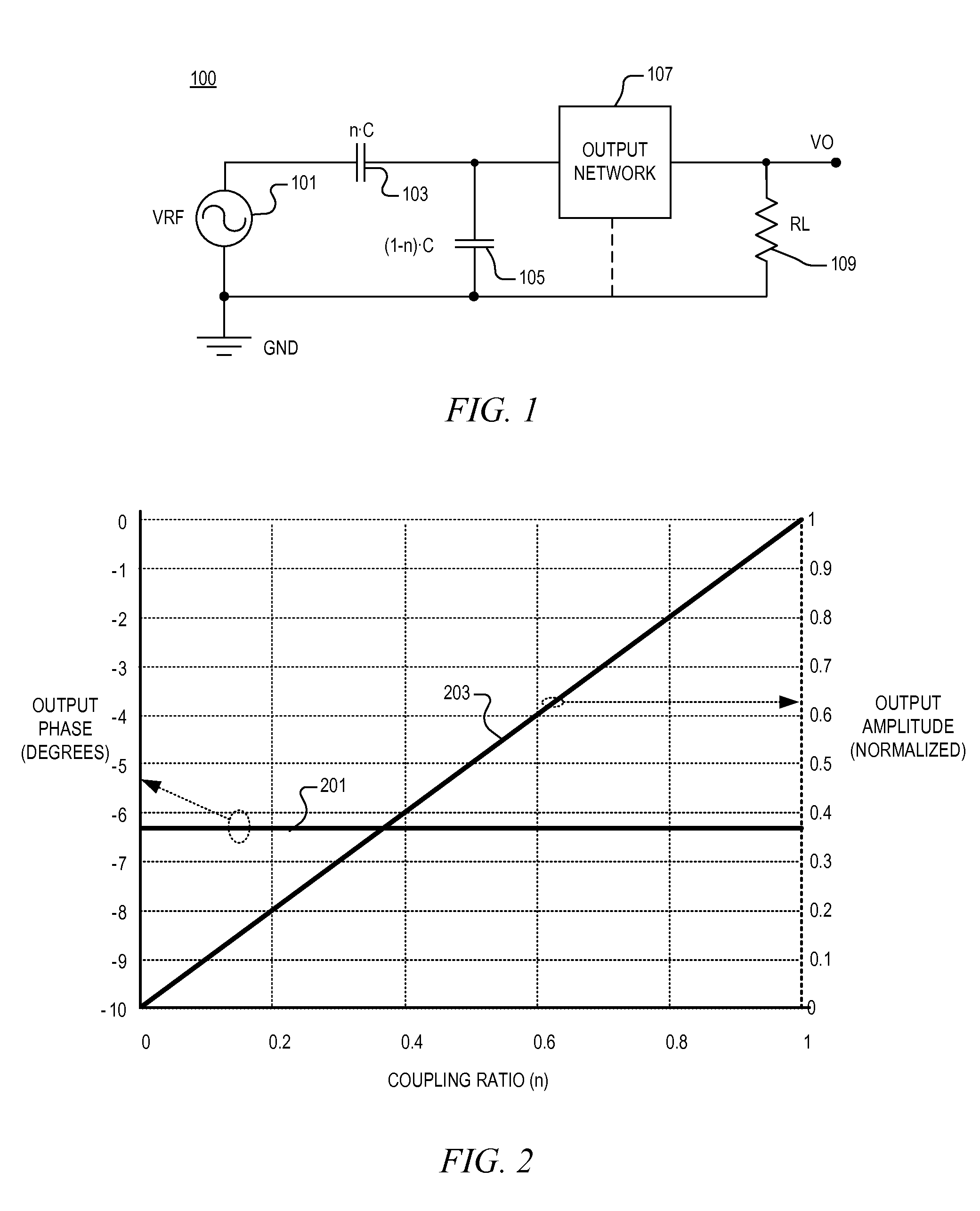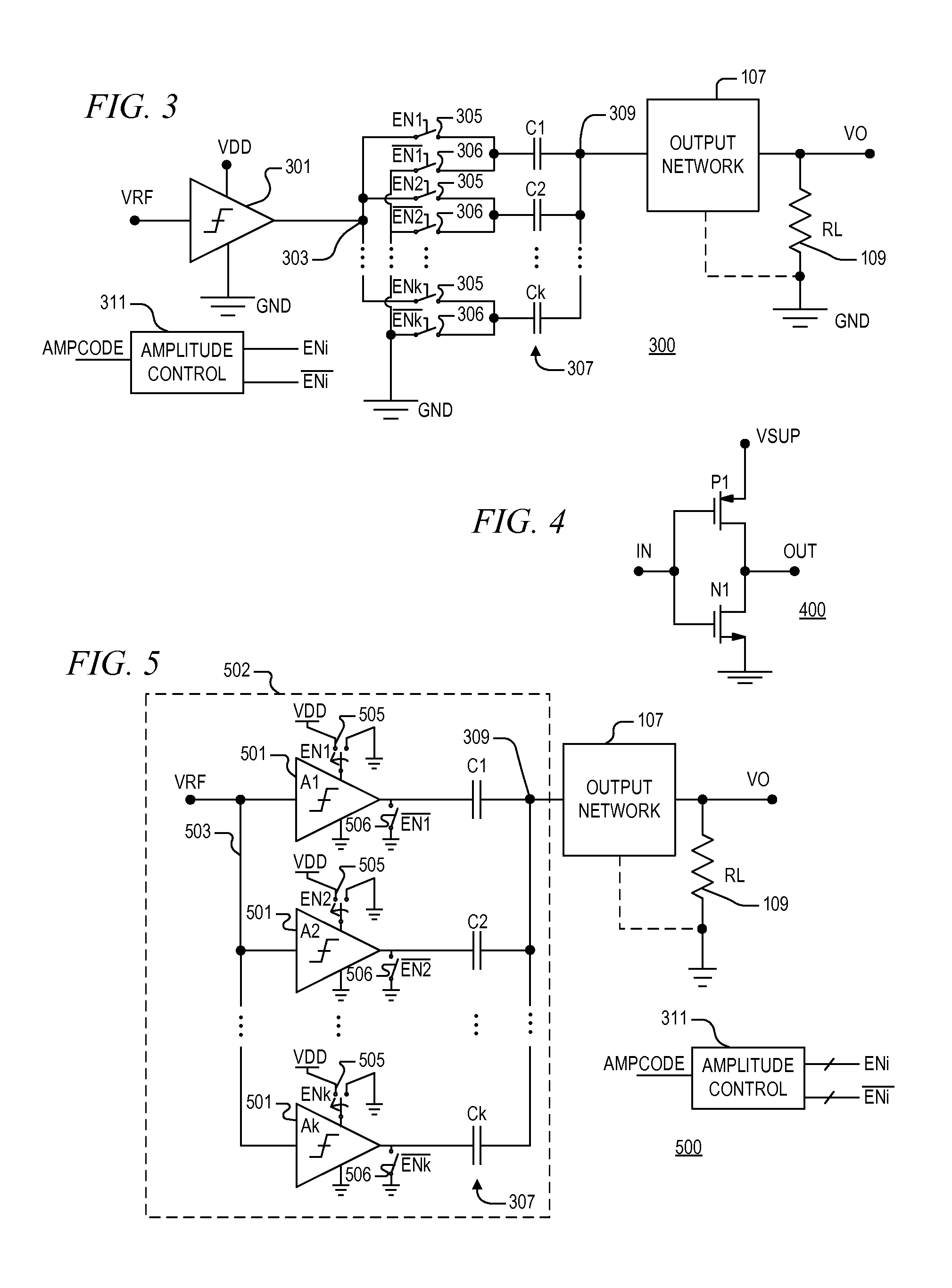Amplitude control system and method for communication systems
a communication system and amplitude control technology, applied in gated amplifiers, limiting amplitude without controlling loops, electrical apparatus, etc., can solve the problems of low transmitter efficiency, difficulty in achieving high average pa (power amplifier) efficiency, and low transmitter efficiency
- Summary
- Abstract
- Description
- Claims
- Application Information
AI Technical Summary
Benefits of technology
Problems solved by technology
Method used
Image
Examples
Embodiment Construction
[0046]The following description is presented to enable one of ordinary skill in the art to make and use the present invention as provided within the context of a particular application and its requirements. Various modifications to the preferred embodiment will, however, be apparent to one skilled in the art, and the general principles defined herein may be applied to other embodiments. Therefore, the present invention is not intended to be limited to the particular embodiments shown and described herein, but is to be accorded the widest scope consistent with the principles and novel features herein disclosed.
[0047]An amplitude control system and method for communication systems according to various embodiments of the present invention avoids the requirement of high bandwidth PA supply modulators to achieve amplitude modulation. In one embodiment, multiple DC supply voltages are used to achieve high efficiency. The DC voltages may be static and may further be well-defined. The DC vo...
PUM
 Login to View More
Login to View More Abstract
Description
Claims
Application Information
 Login to View More
Login to View More - R&D
- Intellectual Property
- Life Sciences
- Materials
- Tech Scout
- Unparalleled Data Quality
- Higher Quality Content
- 60% Fewer Hallucinations
Browse by: Latest US Patents, China's latest patents, Technical Efficacy Thesaurus, Application Domain, Technology Topic, Popular Technical Reports.
© 2025 PatSnap. All rights reserved.Legal|Privacy policy|Modern Slavery Act Transparency Statement|Sitemap|About US| Contact US: help@patsnap.com



